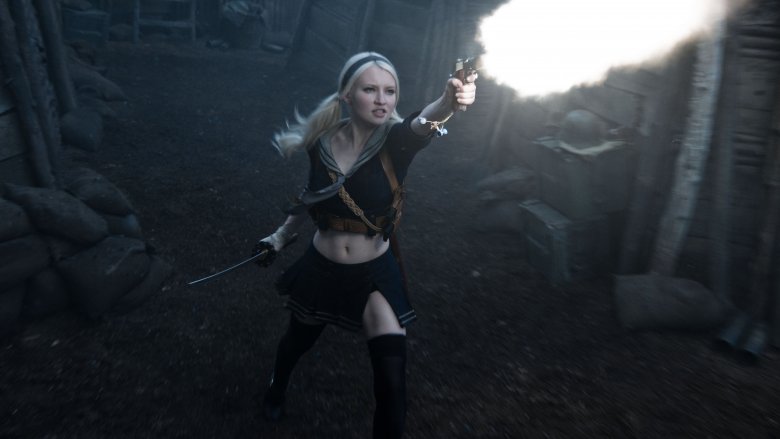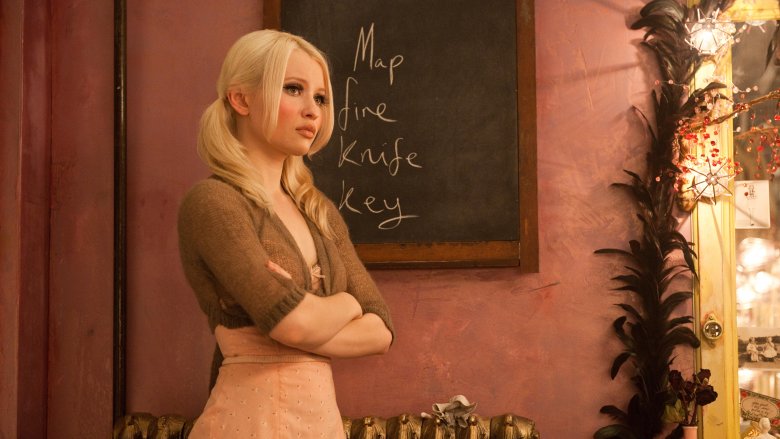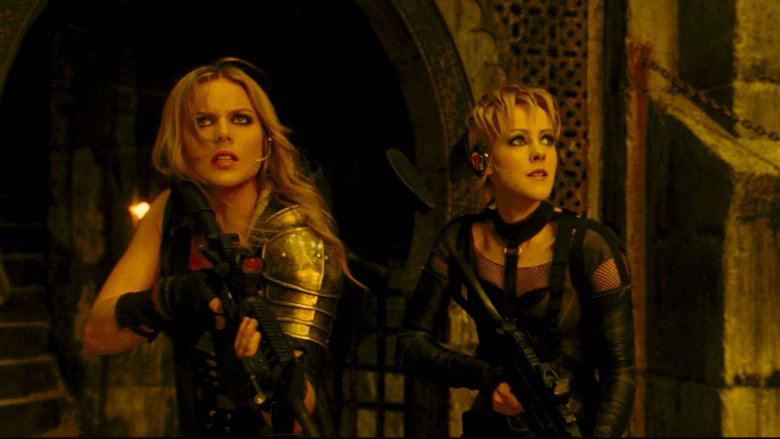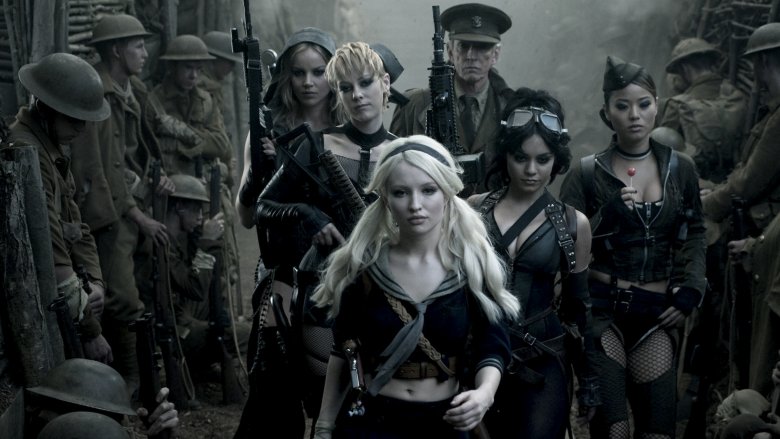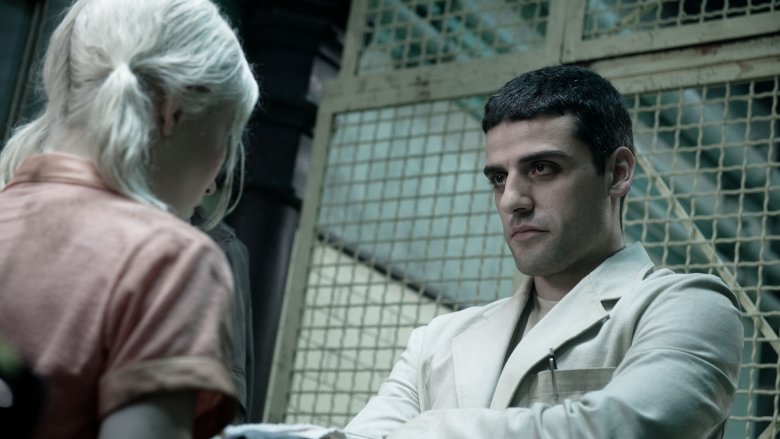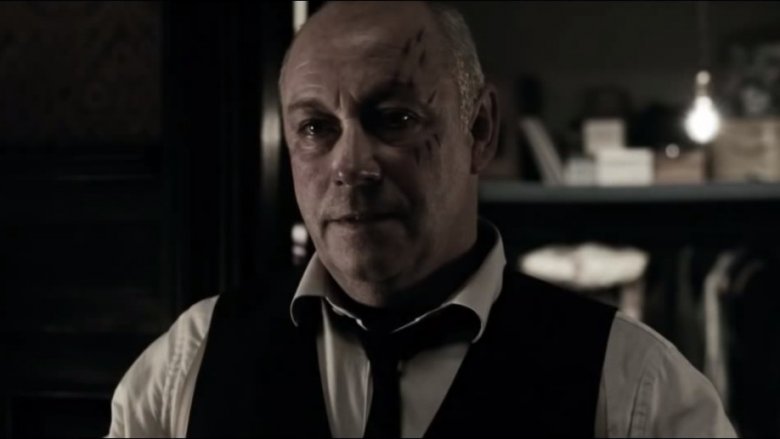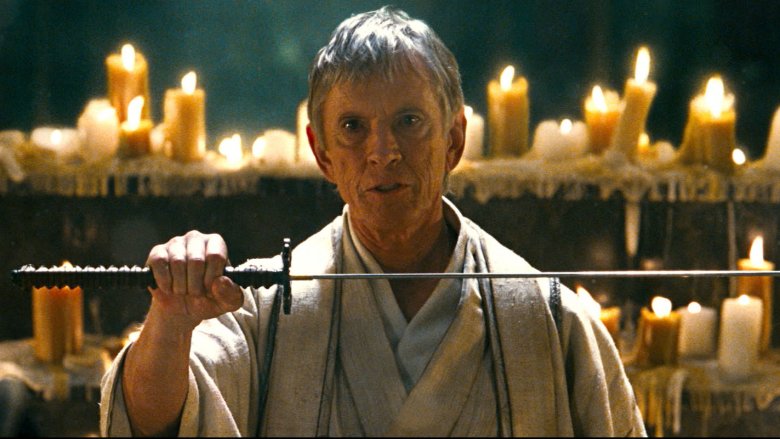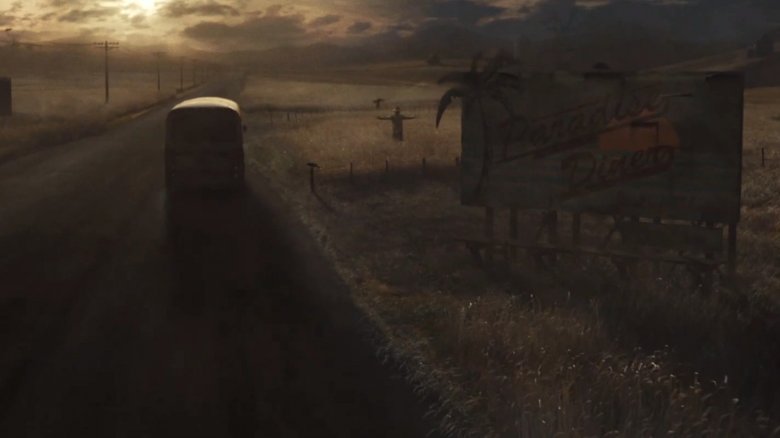The Ending Of Sucker Punch Explained
Zack Snyder is best known to worldwide audiences now for his work on the DC Extended Universe as the director of the blockbusters Man of Steel, Batman v Superman: Dawn of Justice, and Justice League. Before he brought the shared universe of DC Comics to the big screen, though, he weaved worlds within worlds with an original work: Sucker Punch.
Directed and co-written by Snyder, Sucker Punch was derided by critics upon its initial release in 2011, in part because its plot — including the somewhat twisty final act — was deemed incomprehensible by many. Even now, years after its theatrical release, the film's real story still remains open for interpretation, which means explaining its ending means looking at more than one point of view.
So, armed with the knowledge that you can still draw your own conclusions about this divisive action fantasy, let's dive into the final act of Zack Snyder's pre-DCEU effects extravaganza. Here's the ending of Sucker Punch explained.
Whose story is this?
One of the key points of contention in understanding Sucker Punch is determining whose point of view the story is actually being told from. Snyder has suggested in the past that he wanted the film to be left open for interpretation, and it still feels like that kind of movie. Like a great many films, you could conjure up a number of different theories with at least some shred of evidence to support them, but with Sucker Punch, there are three in particular that stand out.
The first and most straightforward is that this is a story about Babydoll (Emily Browning), who's locked in an asylum and teams up with four friends to escape. In the process, she imagines that the asylum is instead a club/brothel, and imagines her "dances" within the club fantasy as elaborate battle sequences. Babydoll doesn't escape, in the end, but her fantasy helps tell the story of how she got her friend Sweet Pea (Abbie Cornish) out in her place.
The second interpretation posits that all of this happened as well, except the fantasy is in Sweet Pea's head, as she imagines her friends who saved her as great warriors in an epic story. The third, and most complex, is that almost nothing in the film "really" happened, and that it's all a fantasy unfolding in Sweet Pea's head as she's about to be lobotomized. When watching the film, it's an interesting exercise to keep all three possibilities in your head.
All the world's a stage
Though many of the fantasy visuals in Sucker Punch are there simply because they look cool, some visual details hold deeper meaning, including the very first thing the film shows us. Snyder opens by showing us a child's bedroom set on a stage, then dissolves that set into Babydoll's bedroom as the death of her mother is unfolding. When Babydoll arrives at the asylum, we see another stage in "the theater," the room where Dr. Gorski (Carla Gugino) encourages her patients to act out and work through their trauma. It's there, sitting on the stage on a bed resembling a worn-out version of Babydoll's, that we see Sweet Pea for the first time. It's also there that Dr. Gorski tells Sweet Pea she's in control. The next time we see a stage, it's in the club fantasy, and Sweet Pea is complaining to Gorski that the dance in which she's supposed to play a lobotomized woman needs work, and should be replaced with something more "commercial."
The recurring motif of the stage plays heavily into the film's running theme of performance as salvation, particularly when Babydoll "dances" to get what she needs to escape. But what if it also signals to us that this is all part of Sweet Pea controlling her little world, including the opening sequence in Babydoll's bedroom? What if that's Sweet Pea reliving her own trauma, while the club fantasy is Sweet Pea working through the same trauma?
Two lobotomies
The "real world" of Sucker Punch seems to show us only one lobotomy: Babydoll's, with the prelude coming in the opening minutes of the film and the aftermath coming in the closing minutes. There is, however, a second lobotomy sequence at the very beginning of the club fantasy, which Sweet Pea interrupts to argue that a mock lobotomy onstage isn't fitting for "the star of the show." Here again, the film offers us essentially two versions of the same story. We can choose to believe that this is the story of Babydoll, that she created the fantasy world, and that her lobotomy puts a stop to that as she sacrifices herself to allow Sweet Pea to escape the asylum, and that's a simple enough answer. It's not the only one, though.
By showing us Sweet Pea stopping her own lobotomy, the film offers up the idea that she is, at least in her own mind, changing the way her story is told. Instead of a mental patient going under the knife, she's a warrior fighting to be free through the battle sequences, and the wig is a hint that Babydoll is in fact not a separate person but a rebellious persona Sweet Pea has created as a psychological coping mechanism. Though she's ultimately lobotomized anyway, Sweet Pea is "free" because the evil Blue (Oscar Isaac) can't reach the real her anymore.
A tale of two sisters
The parallels in the Sucker Punch stories of Babydoll and Sweet Pea continue with the revelation that Rocket (Jena Malone) is Sweet Pea's sister, and Sweet Pea is in the club (and by extension the asylum) because she went after Rocket when she ran away from home. Babydoll was committed to the asylum in the first place by her violent, money-grubbing stepfather (Gerard Plunkett) because she accidentally killed her own little sister while trying to save her, which he then used as the pretense for her mental instability. So, both Babydoll and Sweet Pea got where they are because they went after their sisters.
Then, they both end up losing their sisters, as Rocket sacrifices herself by diving in front of the cook's knife in the club, saving Sweet Pea's life. In the film's opening sequence, Sweet Pea speaks in the narration about finding "guardian angels" in unlikely places. In that sequence in particular they all come out, and they're all directed at helping her. Babydoll is the catalyst that set it all off, Amber (Jamie Chung) is both the clever pilot in the fantasy sequences and the one that saves a knife from the kitchen, and Rocket is the sacrificial body between Sweet Pea and death. In that moment, several of the film's themes collide, and the particular parallels between dying sisters suggests both that Sweet Pea and Babydoll understand each other and are meant to fight on together and that perhaps they're one and the same.
Rocket, Amber, and Blondie
Sucker Punch is a film primarily focused on the personalities of Sweet Pea and Babydoll, whether they're seen as two individuals or two parts of one mind. But what about the other three women: Rocket, Amber, and Blondie (Vanessa Hudgens)?
We know very little about each of them, though Rocket gets the most background as both Sweet Pea's sister and Babydoll's first friend and guide to life in the club. Amber is the practical one who pilots the vehicles in the fantasy sequences, steals the mayor's lighter, and saves a knife from the kitchen. Blondie is the emotional one, fighting in close combat in the fantasy sequences, and the first to crack under the pressure of the escape plan. She's also among the first to die, which could be symbolic of a weak link being severed on the path to freedom. By the end of the film, all three of these women are dead, and we still haven't learned all that much about them. Why? Well, it could be because the film simply doesn't have time to tell their stories when it's largely not about them, but it could also be that they're each facets of Sweet Pea's personality. When she acts out her world on that stage, she takes familiar faces from the asylum and casts them in new roles, including that of her lost sister. This would also explain why their deaths aren't mentioned by Dr. Gorski at the end of the film: Those "deaths" are imaginary.
The fall of Blue
One way or another, Sweet Pea is free by the end of Sucker Punch. Depending on which theory you believe, she's either a real person who ran from the asylum and got on a bus heading west, or she's imagining herself that way somewhere deep in her brain after being lobotomized. In the latter case, Sweet Pea is either a persona in Babydoll's head or Babydoll was a persona in Sweet Pea's head. That's the complicated part you have to figure out.
What's not complicated is that the whole effort to escape ultimately brought about the downfall of Blue, the corrupt orderly who forged signatures for lobotomies, took cash bribes, sexually assaulted the girls himself and — as is heavily implied by the entire club fantasy — sold them to be used by other men. After a week of chaos that included a fire and Babydoll stabbing him, his clandestine operation started to fray around the edges. From there, all it took was Gorksi glancing at a clipboard and his own madness at having lost Babydoll to the lobotomy. One girl, whether it was Babydoll herself or the Babydoll persona inside Sweet Pea, finally took him too deep into his own sins, and that led to his downfall.
Don't forget the stepfather
We can read Blue's reaction to Babydoll's lobotomy in one of two ways, heightened by the stabbing and her declaration that he would "never" have her earlier in the film. Either this new girl arrived at his asylum and was so captivating that he couldn't take it when she was lobotomized, or the Babydoll persona was within Sweet Pea — activated somehow as a coping mechanism for life within the asylum — and he fell in love with that, only to have it taken away by the lobotomy. He screamed "These are my girls!" at Gorski, so he could have meant five girls in the asylum, or five personalities inside one girl (remember that Babydoll's face is never shown throughout this sequence, almost like she's a blank slate). Whichever way you interpret his freakout at the end of the film, it was so intense that when he went down, he decided to take someone else with him.
Namely, he almost immediately implicated Babydoll's stepfather, who bribed him in exchange for a lobotomy at the beginning of the film. Sucker Punch doesn't show us just how much Blue's willing to tell the police about this, or indeed how much he really knows about what went on at Babydoll's house, but his plea of "I'll tell you everything!" coupled with the jittery reaction the other orderlies begin to have to him suggests that the girls' true victory might be uncovering and ending a very large ring of corruption and abuse.
The Wise Man
Virtually every character in Sucker Punch with a speaking role exists both as a persona in the club fantasy and as a person in the asylum, with one very notable exception: The Wise Man (Scott Glenn), who first appears in Babydoll's Japanese battle sequence and exists solely in the fight scenes until the ending, in which he's revealed to be driving the bus that takes Sweet Pea west.
We're never given any context for who the Wise Man really is or is meant to be, particularly since he only appears in the "real" world after Sweet Pea is free of the asylum and the fantasies concocted there. Again, you can pick whatever conclusion you particularly like, but there are two interpretations of his place in the story that really stand out. Sweet Pea's narration runs throughout the film, which could suggest that she's telling the entire story from some point in the future, and therefore the Wise Man is just a kindly bus driver she met during her journey to freedom who she inserted into the fantasy sequences later. The other possibility is that he's an invention of her mind, a kind and nurturing man who speaks in fatherly platitudes — "If you don't stand for something, you'll fall for anything." — dreamed up by a young woman who's never known anything but cruelty from the opposite sex.
Paradise
There are a number of clues throughout Sucker Punch to support both the interpretation that this is all happening inside one girl's head and the interpretation that Sweet Pea really did physically escape the asylum and is on her way to freedom. Even after she's on the bus and riding away during the ending, though, Snyder teases the audience with one last clue: As the bus drives away in the final shot, it passes a billboard that reads "Paradise Diner."
When Babydoll arrives at the asylum, Blue assures her stepfather that after her lobotomy "she'll be in paradise." It could be a coincidence, but given Snyder's famous attention to visual detail, that seems very unlikely.
So, what do we make of this? If you believe this is all happening in Sweet Pea's head, it means that Sweet Pea herself is somewhere in her own mind where she's finally free, heading to Paradise after the Babydoll persona she created sacrificed herself through the lobotomy. This is even potentially reinforced by the closing voiceover, in which Sweet Pea declares "you have all the weapons you need," suggesting that her will to be free was inside her all along and not the product of the four other girls.
Or, perhaps, Sweet Pea is just remembering her friend, and heading off into the sunset to live a full life of paradise on her behalf. Like Dr. Gorski said, you're in control of this world.
